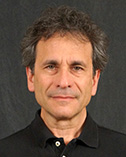
John Rubenstein
University of California, San Francisco
|
Primary Section: 24, Cellular and Molecular Neuroscience Secondary Section: 22, Cellular and Developmental Biology Membership Type:
Member
(elected 2020)
|
Biosketch
I earned a Phi Beta Kappa as a chemistry major at Stanford (1973-77). As an MSTP student at Stanford I earned a PhD in Biophysics (1982) for my studies on the effect of cholesterol on the motions of phospholipids in membranes, and for my studies on the biogenesis of plasma membrane proteins (Harden McConnell and James Rothman). As a postdoctoral fellow at the Pasteur Institute (1984-86; Francois Jacob and J.F. Nicolas) I was an early discoverer that antisense RNA can inhibit gene expression. I also developed retroviral vectors for gene delivery and fate mapping in mouse embryos. As a resident physician at Stanford (1986-1991), I identified genes that are preferentially expressed in the embryonic forebrain, including the Dlx2 and Tbr1 transcription factors. These genes served as entry points for my studies at UCSF, where since 1991 I have performed genetic studies of mammalian forebrain development and human neuropsychiatric disorders. I have investigated: organization of the embryonic forebrain; forebrain patterning centers and their regulation of cortical organization; transcription factors and enhancers that control regional and cell-type specification of brain subdivisions; differentiation, migration and function of GABAergic interneurons; translational studies of treatment for epilepsy; analyses of mutations that contribute to autism.
Research Interests
We focus on transcriptional regulation (TR) at the genome level of regional and cell type specification in the cerebral cortex and basal ganglia to define transcriptional circuits that control these processes and to explore their relevance to human disorders. Having discovered that most cortical interneurons are generated at a distance source, the MGE, our work has also focused on the cell biological, transcriptional and cell-surface signaling mechanisms regulating their specification, migration and synaptogenesis and function. With UCSF colleagues we provided evidence that transplantation of immature MGE-derived interneurons ameliorates epilepsy in mice. This has led to the foundation of a company named Neurona dedicated to generating human MGE-derived interneurons to treat human epilepsy. Finally, we study TRs that are disease genes such as Tbr1 and Pogz that cause intellectual disability and autism, or Dlx1/2/5 and Maf/Mafb that can cause seizures in mice. These TRs have sequential functions in cell specification/differentiation and later in neuronal connectivity and function. We are attempting to derive transcriptional circuits that function while immature neurons are forming synapses. Recent evidence shows that Tbr1 promotes mouse synapse development on cortical excitatory neurons through promoting WNT signaling; conversely increasing WNT signaling rescues in Tbr1-/- synaptic deficits.

